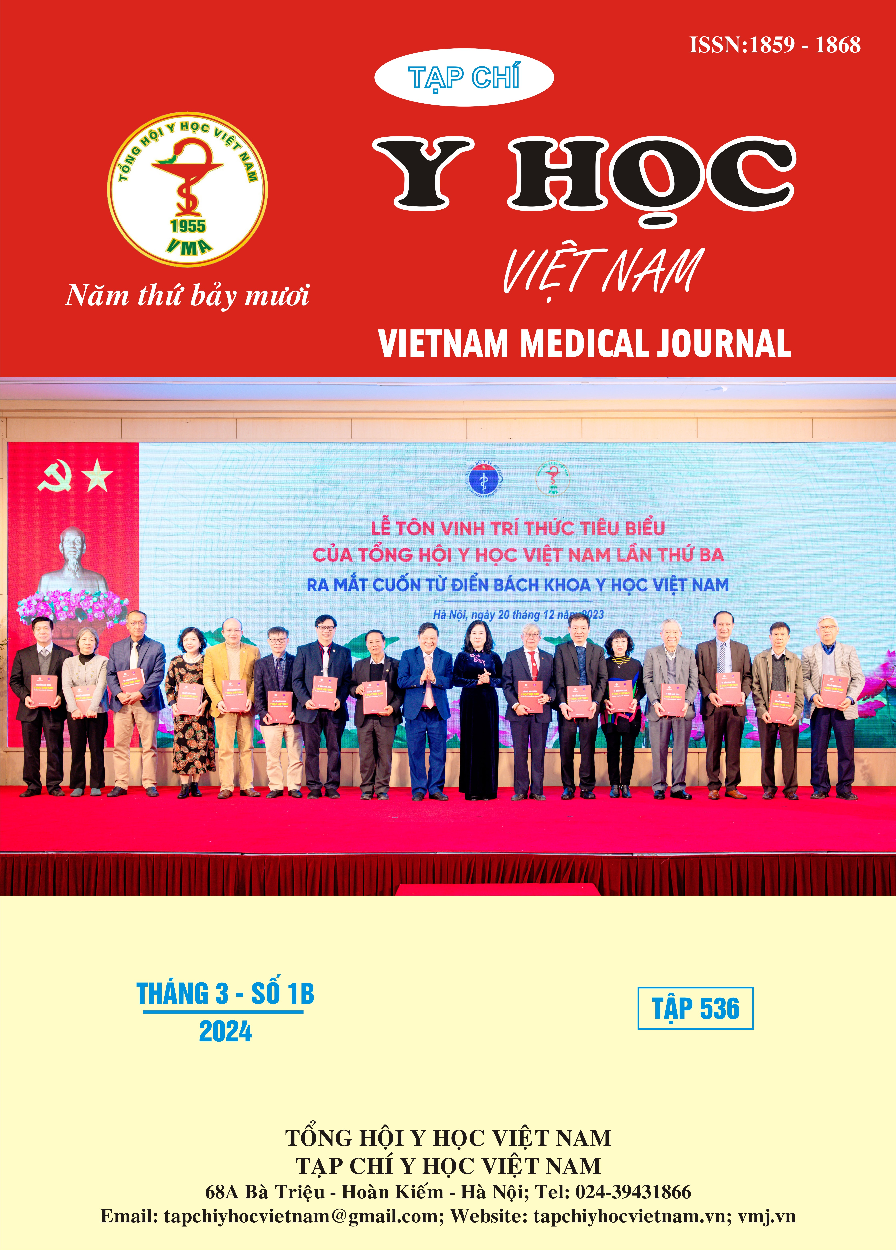CLINICAL AND SUB-CLINICAL CHARACTERISTICS OF LOW RECTAL CANCER AT THANH NHAN HOSPITAL
Main Article Content
Abstract
Objective: Research clinical and paraclinical characteristics of low rectal cancer at Thanh Nhan Hospital and E Hospital. Method: Retrospective and description of cases from January 1, 2019 - June 1, 2023 at Thanh Nhan Hospital and E Hospital. Results: During a 5-year period, there were 136 cases of patients with low rectal cancer treated as inpatients at Thanh Nhan Hospital and E Hospital with men 93 (68,38%), women 43 (41,62%). Average age 63 ± 11.8 years old. The lowest is 30 years old, the highest is 89 years old. The majority of patients came to the doctor within 6 months of having their first symptoms (82.34%). Some common clinical symptoms are: Bloody mucus in the stool (95.58%), frequent defecation (82.35), change in stool pattern (73.5), tenesmus (72%). Figure The predominant macroscopic morphology of the tumor is verrucous (58.23%), verrucous (41.27%). Tumor size according to circumference: Tumor occupies ≥ 3/4 of the circumference (5.88%), occupies ¼-1/2 of the circumference (48.52%), occupies < 1/4 of the circumference (23.52%). Histopathological type: Highly and moderately differentiated adenocarcinoma accounts for 96.1%. Conclusion: TT cancer is quite common and is often detected in advanced stages. Therefore, it is necessary to have a strategy for earlier screening of subjects with risk factors to detect the disease early and treat it effectively.
Article Details
References
Incidence and Mortality Worldwide for 36 Cancersin 185 Countries. CA: a cancer journal for
clinicians. May 2021;71(3): 209-249. doi:10.3322/ caac.21660
2. Zhang Q, Liang J, Chen J, Mei S, Wang Z. Outcomes of Laparoscopic Versus Open Surgery in Elderly Patients with Rectal Cancer. Asian Pacific journal of cancer prevention: APJCP. Apr 1 2021; 22(4): 1325-1329. doi:10. 31557/ APJCP. 2021.22.4.1325
3. Li Z, Xiong H, Qiao T, et al. Long-termoncologic outcomes of natural orifice specimen extraction surgery versus conventional laparoscopic-assisted resection in the treatment of rectal cancer: a propensity-score matching study.BMC surgery. Jul 25 2022;22(1):286. doi:10.1186/s12893-022-01737-2
4. Seishima R, Miyata H, Okabayashi K, et al.Safety and feasibility of laparoscopic surgery for elderly rectal cancer patients in Japan: a nationwide study. BJS open. Mar 5 2021; 5(2)doi:10.1093/bjsopen/zrab007
5. Trần Anh Cường. “Nghiên cứu đặc điểm di căn hạch và kết quả điều trị phẫu thuật ung thư trực tràng tại Bệnh viện K”. 2017. Luận văn Tiến sĩ. Trường Đại học Y Hà Nội
6. Mai Đình Điểu. "Nghiên cứu ứng dụng phẫu thuật nội soi trong điều trị ung thư trực tràng". Luận văn tiến sỹ y học, trường đại học y dược Huế. 2014.
7. Zhang, X., et al. "Hand-Assisted Laparoscopic Surgery Versus Conventional Laparoscopic Surgery for Colorectal Cancer: A Systematic Review and Meta-Analysis." J Laparoendosc Adv Surg Tech A. 2018; 27(12): 1251-1262
8. Piawah, S. and A. P. Venook. "Targeted therapy for colorectal cancer metastases: A review of current methods of molecularly targeted therapy and the use of tumor biomarkers in the treatment of metastatic colorectal cancer." Cancer. 2019; 125(23): 4139-4147.
9. Quách Văn Kiên. “Nghiên cứu ứng dụng phẫu thuật nội soi bảo tồn cơ thắt trong ung thư trực tràng giữa và dưới”. Luận văn Tiến sĩ Y học. 2019. Trường Đại học Y Hà Nội
10. Lê Quốc Tuấn. “Đánh giá kết quả phẫu thuật cắt đoạn và nối máy trong điều trị ung thư trực tràng giữa và thấp”. Luận văn Tiến sĩ y học. 2020. Trường Đại học Y Hà Nội


